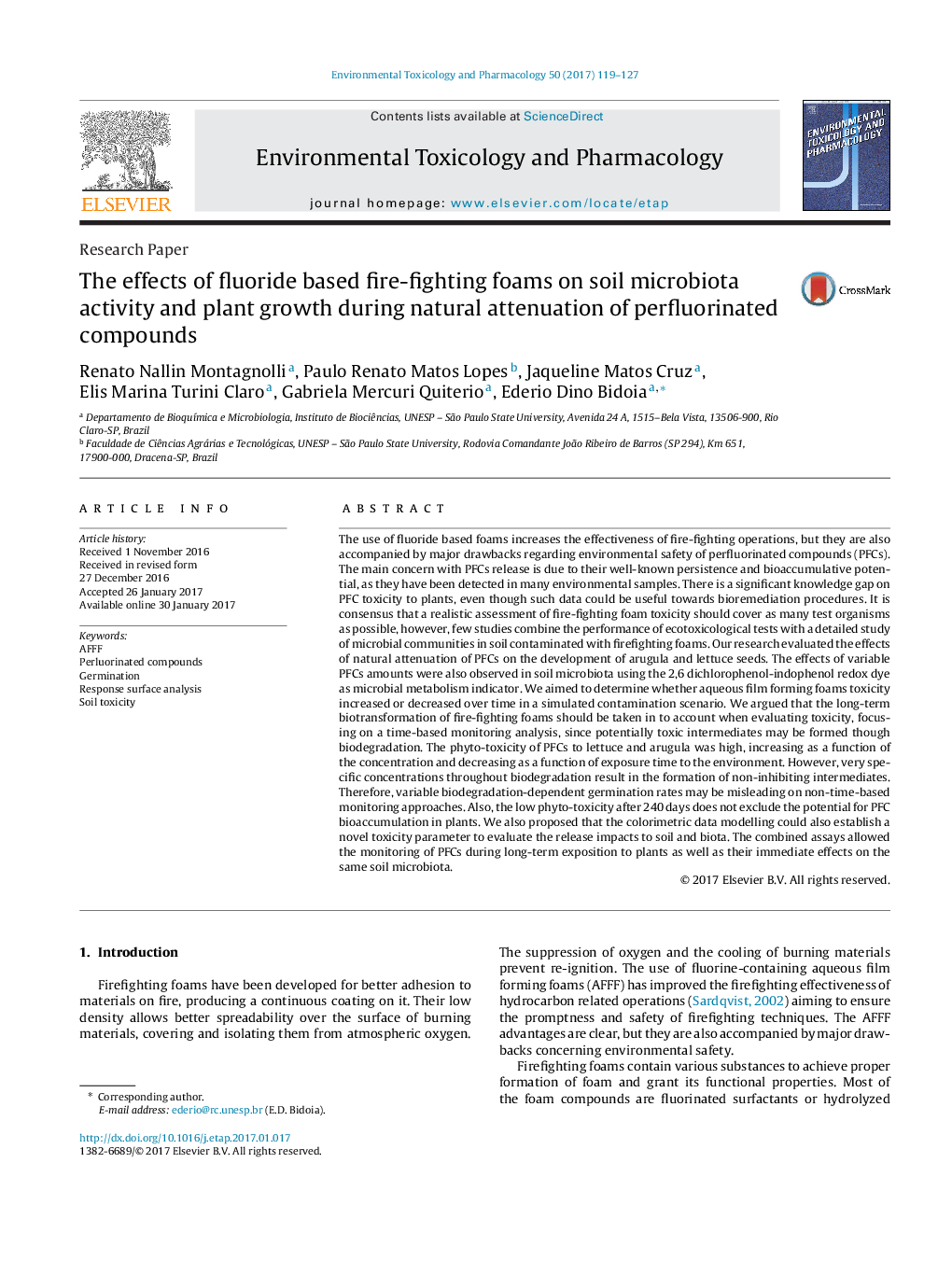| کد مقاله | کد نشریه | سال انتشار | مقاله انگلیسی | نسخه تمام متن |
|---|---|---|---|---|
| 5559712 | 1561694 | 2017 | 9 صفحه PDF | دانلود رایگان |
- Long-term toxicity assays can ensure safe PFC release levels.
- Arugula is a less sensitive PFC toxicity bioindicator compared to lettuce.
- The long-term toxicity assays revealed variable toxicity throughout natural attenuation.
- High germination rates can be related to PFC bioaccumulative potential.
- A novel toxicity score method evaluated concentration effects towards soil microbiota.
The use of fluoride based foams increases the effectiveness of fire-fighting operations, but they are also accompanied by major drawbacks regarding environmental safety of perfluorinated compounds (PFCs). The main concern with PFCs release is due to their well-known persistence and bioaccumulative potential, as they have been detected in many environmental samples. There is a significant knowledge gap on PFC toxicity to plants, even though such data could be useful towards bioremediation procedures. It is consensus that a realistic assessment of fire-fighting foam toxicity should cover as many test organisms as possible, however, few studies combine the performance of ecotoxicological tests with a detailed study of microbial communities in soil contaminated with firefighting foams. Our research evaluated the effects of natural attenuation of PFCs on the development of arugula and lettuce seeds. The effects of variable PFCs amounts were also observed in soil microbiota using the 2,6 dichlorophenol-indophenol redox dye as microbial metabolism indicator. We aimed to determine whether aqueous film forming foams toxicity increased or decreased over time in a simulated contamination scenario. We argued that the long-term biotransformation of fire-fighting foams should be taken in to account when evaluating toxicity, focusing on a time-based monitoring analysis, since potentially toxic intermediates may be formed though biodegradation. The phyto-toxicity of PFCs to lettuce and arugula was high, increasing as a function of the concentration and decreasing as a function of exposure time to the environment. However, very specific concentrations throughout biodegradation result in the formation of non-inhibiting intermediates. Therefore, variable biodegradation-dependent germination rates may be misleading on non-time-based monitoring approaches. Also, the low phyto-toxicity after 240Â days does not exclude the potential for PFC bioaccumulation in plants. We also proposed that the colorimetric data modelling could also establish a novel toxicity parameter to evaluate the release impacts to soil and biota. The combined assays allowed the monitoring of PFCs during long-term exposition to plants as well as their immediate effects on the same soil microbiota.
141
Journal: Environmental Toxicology and Pharmacology - Volume 50, March 2017, Pages 119-127
